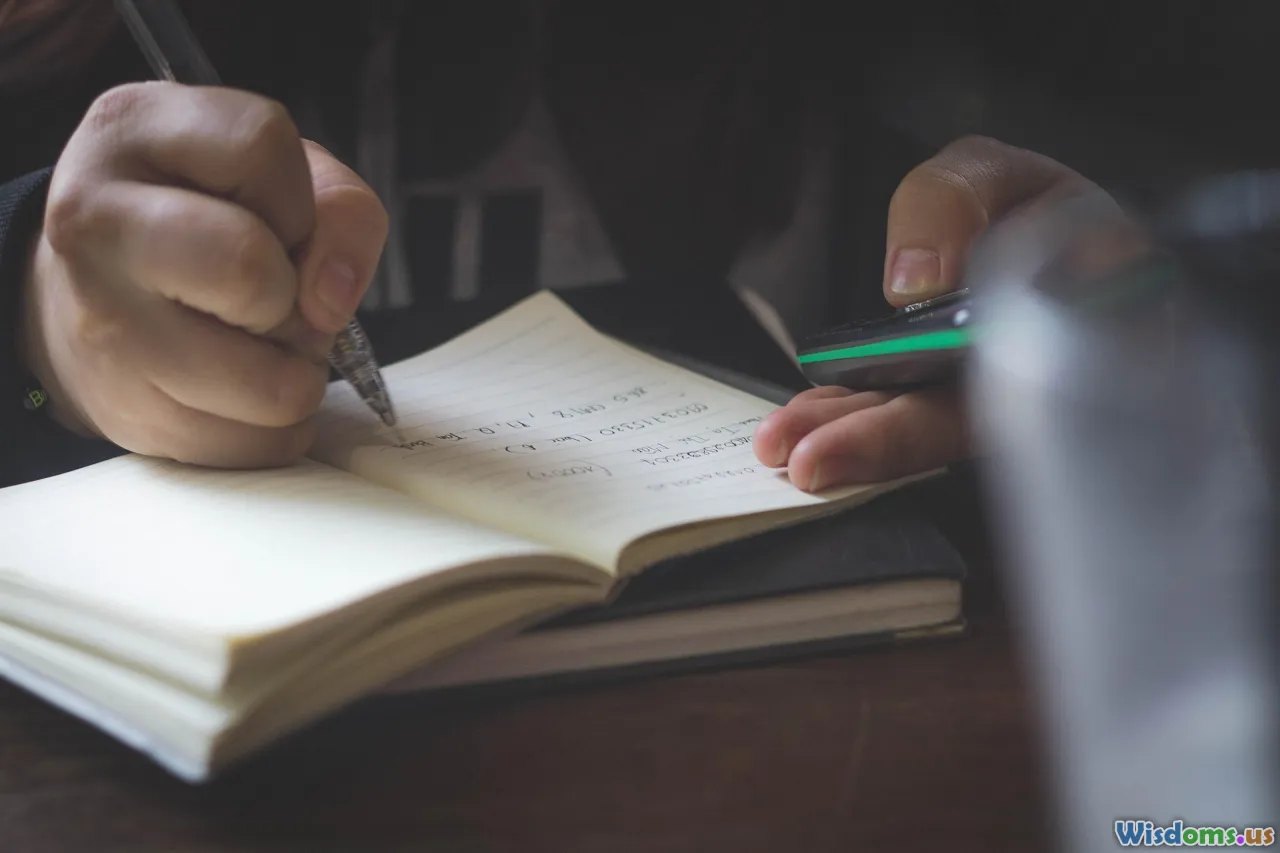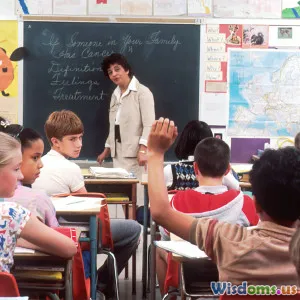
Can Montessori Methods Cure Modern Classroom Challenges
9 min read Explore how Montessori methods address core modern classroom challenges for enhanced learning environments. (0 Reviews)
Can Montessori Methods Cure Modern Classroom Challenges?
The landscape of modern education is rife with challenges: overcrowded classrooms, fluctuating attention spans, rigid curricula, and escalating pressures related to standardized testing. Many educators and parents alike wonder if there is an effective pedagogical approach that can navigate and alleviate these issues. Enter the Montessori method—an educational philosophy devised over a century ago but intriguingly relevant to today’s classrooms. Founded by Dr. Maria Montessori, this method emphasizes individualized, hands-on learning and the cultivation of intrinsic motivation.
In this article, we explore how Montessori methods could be more than just an alternative approach; they might indeed offer solutions to persistent educational problems confronting today’s schools.
Understanding Modern Classroom Challenges
Before evaluating Montessori strategies, it’s essential to understand the pressing problems faced in contemporary classrooms.
1. Overcrowded Classes and Limited Individual Attention
Many public and private schools globally confront class sizes exceeding 25-30 students, limiting a teacher’s ability to engage attentively with each learner. Educational research reveals that personalized attention can improve learners' outcomes by up to 30% (OECD, 2019). However, such individualization is difficult in large classes.
2. Lack of Student Engagement and Motivation
With an abundance of distractions, including digital devices and environmental stimuli, sustaining student interest is challenging. A 2017 Gallup survey indicated that only 33% of U.S. students felt engaged with their schoolwork.
3. Overemphasis on Standardized Testing
Schools are frequently pressured to 'teach to the test,' diluting creativity and critical thinking. This results in superficial comprehension rather than deeper, meaningful learning.
4. Diverse Learning Styles and Needs
Heterogeneity in student abilities and learning preferences demands adaptive teaching strategies, which most traditional classrooms are not structurally equipped to meet.
Fundamentals of Montessori Education
Dr. Maria Montessori’s philosophy, developed in the early 1900s, is grounded in the belief that children learn best in environments that nurture their natural curiosity. Several pillars distinguish Montessori education from traditional pedagogy.
Child-Centered Learning
Montessori classrooms empower children with freedom within limits, letting them select activities aligned with their interests and pace.
Prepared Environment
Classrooms feature tactile, hands-on materials designed to engage multiple senses, facilitating abstract understanding through concrete manipulation.
Mixed Age Groups
Typically spanning three years, mixed-age classrooms promote peer learning and mentorship, fostering social cooperation and empathy.
Role of the Teacher as Guide
Teachers observe and interact with students, stepping in to facilitate rather than dictate learning.
Can Montessori Methods Address Modern Challenges?
Tackling Overcrowding with Individualized Attention
While Montessori classrooms vary in size, their structure supports individualized learning. The educational environment allows children to self-regulate and work independently. For instance, a study conducted by Lillard and Else-Quest (2006) found that Montessori students showed better reading and math outcomes than peers in traditional settings, which may be partly attributed to personalized learning paths.
Moreover, the teacher-as-guide model can handle variability within larger groups by encouraging self-paced progress.
Boosting Engagement and Motivation
Montessori’s emphasis on choice ignites children's inner motivation. Instead of mandatory worksheets, students engage with manipulatives like the "Pink Tower" or "Moveable Alphabet," which combine sensory experiences with intellectual development.
A 2017 study published in the Journal of School Psychology demonstrated that Montessori students manifested higher intrinsic motivation levels and sustained attention than comparable peers, factors essential in combating disengagement.
Reducing Reliance on Standardized Procedures
Montessori curricula discourage rote memorization in favor of conceptual exploration. Students engage with learning via discovery and problem-solving activities.
This holistic experience counters the pitfalls of teaching to the test by fostering critical thinking and adaptable skills. For instance, Montessori students learn complex concepts like fractions through tangible bead chains, enabling deep comprehension rather than memorization.
Meeting Diverse Learning Needs
Montessori classrooms celebrate diversity by allowing children to progress at individual rates. For students with learning difficulties or exceptional talents, this flexibility can be transformative.
A notable example comes from the New Gate Montessori School in California, which integrates children with autism spectrum disorder into Montessori classrooms and reports improved social interaction and academic development compared to traditional special education settings.
Real-World Success Stories and Data
Countries and schools worldwide have experimented with or adopted Montessori principles to positive effect.
Finland’s Montessori Influence
Renowned for its top-tier education system, Finland incorporates Montessori methods within some of its early education schemes, particularly in facilitating self-directed learning and play. Finnish teachers highlight Montessori’s alignment with their emphasis on student autonomy and holistic welfare.
Improved Academic Outcomes
Empirical data supports Montessori’s efficacy. A 2017 randomized controlled trial involving 141 children in New York showed Montessori students performed significantly better in reading and math after two years compared to control groups.
Emotional and Social Benefits
Beyond academics, Montessori education promotes pro-social behaviors and emotional regulation. Parents in Montessori programs frequently remark on their children’s enhanced independence and empathy.
Challenges and Considerations in Adopting Montessori Methods
Despite these promising benefits, integrating Montessori approaches is not a panacea and faces practical constraints.
- Teacher Training: Montessori educators require specialized certification, which can limit the availability of qualified instructors.
- Infrastructure: Prepared environments demand classroom redesigns and investments in specialized materials.
- Scalability: Implementing Montessori principals across large, diverse public school systems is complex.
Still, many schools bridge these gaps by blending Montessori strategies with traditional education frameworks, tailoring approaches to local needs.
The Future: Blending Montessori with Modern Education
Innovative educators envision hybrid models where Montessori principles—such as self-directed learning and sensory materials—complement technology-rich classrooms and standardized skill benchmarks.
For example, "Montessori-Inspired" digital apps encourage exploration while still offering progress metrics suited for educational accountability.
In an era craving personalized, engaging education, the Montessori method’s enduring teachings could be crucial components in evolving the modern classroom.
Conclusion
Modern classrooms grapple with complex challenges: large class sizes, disengaged students, one-size-fits-all curricula, and increasing pressure on standardized testing. Montessori methods offer compelling solutions through individualized learning, intrinsic motivation, and nurturing environments.
With proven academic and social outcomes, the Montessori approach deserves serious attention from educators and policymakers aiming to revitalize education. While challenges in widescale adoption exist, purposeful integration of Montessori techniques promises a more inclusive, engaging, and effective learning experience.
As Dr. Montessori said, "The greatest sign of success for a teacher… is to be able to say, ‘The children are now working as if I did not exist.’" In rethinking classrooms for the 21st century, her vision may well hold the key.
References:
- Lillard, A., & Else-Quest, N. (2006). The early years: Evaluating Montessori education. Science.
- OECD (2019). PISA Results on Individualized Attention.
- Gallup (2017). Student Engagement Survey.
- Journal of School Psychology (2017). Montessori Students' Motivation and Attention Study.
- New Gate Montessori School case studies.
Rate the Post
User Reviews
Popular Posts




















